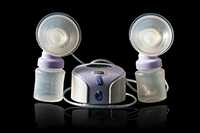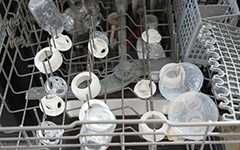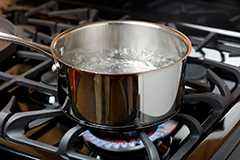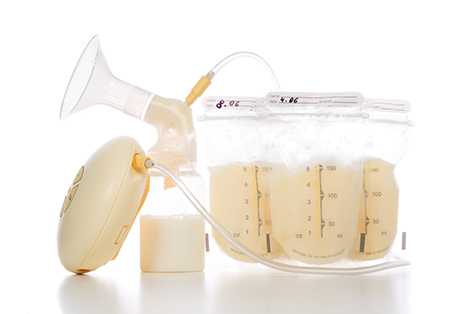How to Keep Your Breast Pump Kit Clean: The Essentials
Print-and-Go Fact Sheet

Printable Fact Sheet: How to Keep Your Breast Pump Kit Clean
Print version: How to Keep Your Breast Pump Kit Clean [PDF – 1 page] (English)
Print version: How to Keep Your Breast Pump Kit Clean [PDF – 1 page] (Español)
Providing breast milk is one of the best things you can do for your baby’s health and development. Pumping your milk is one way to provide breast milk to your baby. However, germs can grow quickly in breast milk or breast milk residue that remains on pump parts. Following these steps can keep your breast pump clean and help protect your baby from these germs. If your baby was born prematurely or has other health concerns, your baby’s health care providers may have more recommendations for pumping breast milk safely.
Before each use:
- Wash hands. Wash your hands well with soap and water for 20 seconds.
- Assemble. Assemble clean pump kit. Inspect whether the pump kit or tubing has become moldy or soiled during storage. If your tubing is moldy, discard and replace immediately.
- Clean if using a shared pump.Clean pump dials, power switch, and countertop with disinfectant wipe.
After every use:

- Store milk safely. Cap milk collection bottle or seal milk collection bag, label with date and time, and immediately place in a refrigerator, freezer, or cooler bag with ice packs.
- If milk collection container will be stored at a hospital or childcare facility, add name to the label.
- Clean pumping area. Especially if using a shared pump, clean the dials, power switch, and countertop with disinfectant wipes.
- Take apart and inspect pump kit. Take apart breast pump tubing and separate all parts that come in contact with breast/breast milk (for example, flanges, valves, membranes, connectors, and milk collection bottles).
- Rinse pump kit. Rinse breast pump parts that come into contact with breast/breast milk under running water to remove remaining milk
- Clean pump kit. As soon as possible after pumping, clean pump parts that come into contact with breast/breast milk in one of the following ways.
- Clean by hand.
- Use a wash basin. Place pump parts in a clean wash basin used only for washing infant feeding equipment. Do not place pump parts directly in the sink, because germs in sinks or drains could contaminate the pump.
- Add soap and water. Fill wash basin with hot water and add soap.
- Scrub. Scrub items using a clean brush that is used only to clean infant feeding items.
- Rinse. Rinse by holding items under running water, or by submerging in fresh water in a separate basin that is used only for cleaning infant feeding items.
- Dry. Allow to air-dry thoroughly. Place pump parts, wash basin, and bottle brush on a clean, unused dish towel or paper towel in an area protected from dirt and dust. Do not use a dish towel to rub or pat items dry because doing so may transfer germs to the items.
-
 Clean in a dishwasher (if recommended by pump kit manufacturer).
Clean in a dishwasher (if recommended by pump kit manufacturer).
- Wash. Place disassembled pump parts in dishwasher. Be sure to place small items into a closed-top basket or mesh laundry bag so they don’t end up in the dishwasher filter. If possible, run the dishwasher using hot water and a heated drying cycle (or sanitizing setting); this can help kill more germs.
- Remove from dishwasher. Wash your hands with soap and water before removing and storing cleaned items. If items are not completely dry, place items on a clean, unused dish towel or paper towel to air-dry thoroughly before storing. Do not use a dish towel to rub or pat items dry because doing so may transfer germs to the items.
- Clean wash basin and bottle brush. If you use a wash basin or bottle brush when cleaning your pump parts, rinse them well and allow them to air-dry after each use. Consider washing them every few days, either in a dishwasher with hot water and a heated drying cycle if they are dishwasher-safe, or by hand with soap and warm water.
For Extra Protection, Sanitize
For extra germ removal, sanitize pump parts at least once daily. Sanitizing is especially important if your baby is less than 3 months old, was born prematurely, or has a weakened immune system due to illness or medical treatment (such as chemotherapy for cancer). Daily sanitizing of pump parts may not be necessary for older, healthy babies, if the parts are cleaned carefully after each use. Sanitize all items (even the bottle brush and wash basin!) by using one of the following options.
Note: If you use a dishwasher with hot water and a heating drying cycle (or sanitizing setting) to clean infant feeding items, a separate sanitizing step is not necessary.
- Clean first. Pump parts, bottle brushes, and wash basins should be sanitized only after they have been cleaned.
-
Sanitize. Sanitize the pump kit, bottle brushes, and wash basins using one of the following options. Check manufacturer’s instructions about whether items may be steamed or boiled.
-
Steam:
- Use a microwave or plug-in steam system according to the manufacturer’s directions.
-

Boil:
- Place disassembled items that are safe to boil into a pot and cover with water.
- Put the pot over heat and bring to a boil.
- Boil for 5 minutes.
- Remove items with clean tongs.
-
Steam:
- Allow to air-dry thoroughly. Place sanitized pump parts, wash basin, and bottle brush on a clean, unused dish towel or paper towel in an area protected from dirt and dust. Do not use a dish towel to rub or pat items dry because doing so may transfer germs to the items.
Store Safely Until Needed
Allow the clean pump parts, bottle brushes, and wash basins to air-dry thoroughly before storing to help prevent germs and mold from growing. Once completely dry, the items should be stored in a clean, protected area to prevent contamination during storage.
- Wash hands. Wash hands well with soap and water.
- Reassemble. Put together the clean, dry pump parts.
- Store safely. Place reassembled pump kit in a clean, protected area such as inside an unused, sealable food storage bag. Store wash basins and bottle brushes in a clean area.
More Information
FDA: Cleaning a Breast Pump
Healthy Children.org: Sterilizing and Warming Baby Bottles
CDC: Breastfeeding Recommendations

Tips for handling breast pump tubing
- When used correctly, breast pump tubing does not touch the pumped milk and does not need to be cleaned routinely.
- Keep a spare set of tubing on hand in case the set you are using gets soiled or damaged.
- If your tubing has water droplets in it at the end of a pumping session, disconnect the tubing from the flange/pump kit, but leave it attached to the pump. Run the pump for a few more minutes until the tubing is dry.
- If your tubing has milk or mold in it, throw it away immediately because it is difficult to clean properly. Replace it with a new set of tubing, and check to see if the problem happened because
- The valves or membranes need to be replaced.
- The tubing was attached to the pump incorrectly.
- If the outside of your tubing is soiled, wipe it with a damp cloth or disinfectant wipe.
- Page last reviewed: August 15, 2017
- Page last updated: August 15, 2017
- Content source:


 ShareCompartir
ShareCompartir